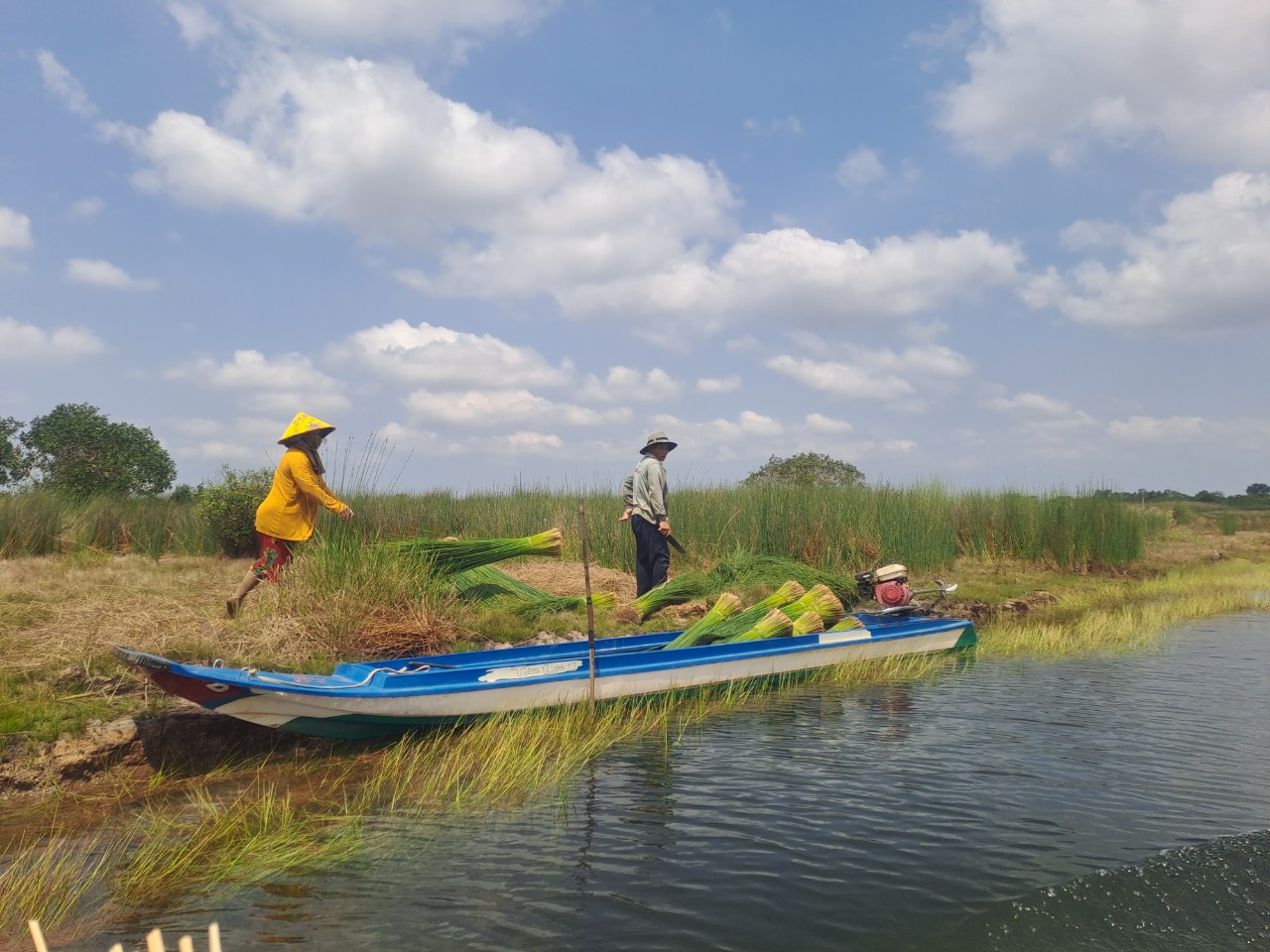Transboundary dialogue on wetlands and agriculture in the Mekong Delta
In September 2022, IUCN and Wildfowl & Wetlands Trust (WWT) organised a transboundary dialogue on wetlands (seasonally flooded grasslands) and agriculture in the Mekong Delta. The dialogue was held in Kampot, Cambodia, with 60 participants from provincial governments, research institutes, universities and international organisations. It was funded by IUCN’s IKI Mekong WET.
Participants discussed the challenges they face conserving natural wetlands in the delta, which have been almost entirely converted to paddy. This process is much more advanced in Viet Nam where since 2000 a program of rice intensification, initially intended to ensure domestic food security, was launched. This involved the construction of large ring dikes to grow a third crop of rice a year. These dikes were needed because the third rice crop matures in November when the Mekong flood is at its highest.
Starting in 2011, IUCN worked closely with the World Bank, Netherlands Embassy, and GIZ to document the huge economic, social and environmental costs of this “rice at all costs” approach. This culminated in Resolution 120 in 2017, which provided the political basis for a transition to flood-based agriculture such as lotus and the traditional long-stem flood-adapted rice varieties that are very nutritious. The shift toward a more natural hydrology allows for restoration of the Mekong floodplain, which has major biodiversity and climate change adaptation benefits. While the area of natural wetlands in protected areas is very small, large areas of restored semi-natural wetlands could count as OECMs.
The Cambodian portion of the Mekong Delta is in a more natural state but there is a clear trend toward adding a dry season rice crop through the development of irrigation infrastructure. A goal of the workshop was to warn Cambodians of the hidden costs of rice intensification in the form of debt distress, pesticide poisoning, and collapse of capture fisheries. With this in mind, the dialogue came up with the following recommendations.
Strictly protect the remaining natural grasslands in the Cambodian portion of the delta. The main cause of this problem is that some poor people convert natural wetlands into paddy and then sell up to rich people and continue to encroach. This process is underway in the Boeung Prek Lapouv Nature Reserve in Cambodia and the Phu My Species and Habitat Conservation Area in Viet Nam.
Enhance dialogue between Cambodia and Viet Nam to implement effective strategies for wetland wise use in the Mekong Delta. Policies should be consistent between sectors. Cambodia should avoid mistakes that Viet Nam has experienced during development process, especially on rice production. Cambodia should a platform like Mekong Delta Working Group in Viet Nam, which includes development partners and NGOs to coordinate and lead dialogue with government.
Build a greater knowledge base around transboundary water storage and security in the Mekong Delta. Most of activities in the two countries are related to water, so knowing about water in present and in the future can help to ensure water security in term of quality and quantity, including groundwater source.
There is a need for integrated planning for the Mekong Delta to promote partnership building, engagement and collaboration and to improve nature-based solutions in the region. Each country has its own set of challenges, and the actions of one country can affect another. Therefore, the two countries should establish a small cross-border policy dialogue group to share experiences and cooperate in agriculture development.
The workshop ended with a field trip to the Anlung Pring Protected Landscape in Kampot Province, which hosts the Vulnerable Sarus crane (Grus antigone). Participants met with local community members to discuss their participation in conservation activities.



